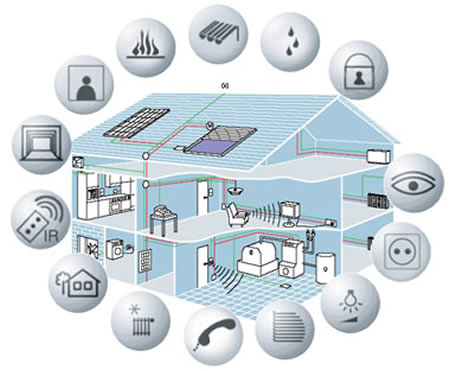
Home Automation Driving Data Innovation
In a world that is finding new ways to track, send and receive just about any shred of information that might have potential use, automation, monitoring and location-awareness have become par for the course.
In this era, we have an Internet of Things–we understand that our movements can be tracked based on our mobile signals and many of us voluntarily push out any amount of widely-available data about our location, who we’re with and so on.
There is nothing new about the concept of home automation—it’s been around for years and has often been lauded as one of the symbols of technological progress.
The concept of the “smart home” has been a pervasive one. However, due to affordability (both to setup and maintain), technological/bandwidth constraints, and perhaps to a lesser extent a general sense comfort with an always-on technology smart, automated homes never got picked up in the mainstream current.
In the past two years, service providers, including telecoms, cable, security, and energy, have all launched additional home automation services for managing energy use or security monitoring to their suites of monthly billed services,” says Jonathan Collins, principal analyst, wireless healthcare and M2M.
New markets are springing up to capitalize on this fast-growing comfort with automation and monitoring in our personal spaces, including in the burgeoning home automation business. This means a great deal for consumers, but also for makers of big data systems, software and tools, not to mention the ICT companies streaming and feeding such services.
 As Cisco’s Rick Huijbregts said of the Internet of Things through the home automation example. “Companies in the telecom industry work frantically around the world to keep up with the rapidly growing demand. Faster hardware needs to replace the still-young-yet-already-outdated infrastructure in our existing communities. It’ll be a refresh cycle that may never finish nor slow down. This is where new communities can substantially benefit.”
As Cisco’s Rick Huijbregts said of the Internet of Things through the home automation example. “Companies in the telecom industry work frantically around the world to keep up with the rapidly growing demand. Faster hardware needs to replace the still-young-yet-already-outdated infrastructure in our existing communities. It’ll be a refresh cycle that may never finish nor slow down. This is where new communities can substantially benefit.”
According to a report today, over the next five years the managed home automation market will grow installments at a CAGR of 60% between 2012 and 2017, outstripping the 31% growth across the total market comprising luxury, mainstream, and DIY home automation deployments. As ABI Research points out, the evolution of the home automation market into the mainstream requires a raft of new partnerships. No company is able to provide all the parts, so telecom, cable, security, and utility providers are all looking to smart devices vendors, managed software providers, local installation specialists, and others to support the broad rollout of home automation services.
For startups like Pachube (recently acquired by LogMeIn), home automation data streams are one of the many news ways that rich data wells are being created for their intended and exterior uses. As the company’s CEO and founder, Usman Haque told the New York Times, the data revolution can be seen easily in emerging mainstream technology markets like home automation, even if the end product of all that data, which could eventually be owned by any number of parties eventually, is uncertain.
As Huijbregts said, it’s not just people anymore that instigate the tremendous traffic and transactions on the Internet. He reminds us that The IP-enablement of systems and devices have extended the nodes in our networked world.
“ More ‘things’ use the infrastructure to communicate — in addition to phones, tablets and computers, we see sensors, meters, power stations, street lights, buses and cars, home automation, media, gaming, signage, health systems and many more devices in manufacturing, retail, security (and so forth) all become part of the fabric that makes the foundation of our smart and connected world.”
Related Stories
7 Big Winners in the U.S. Big Data Drive






























